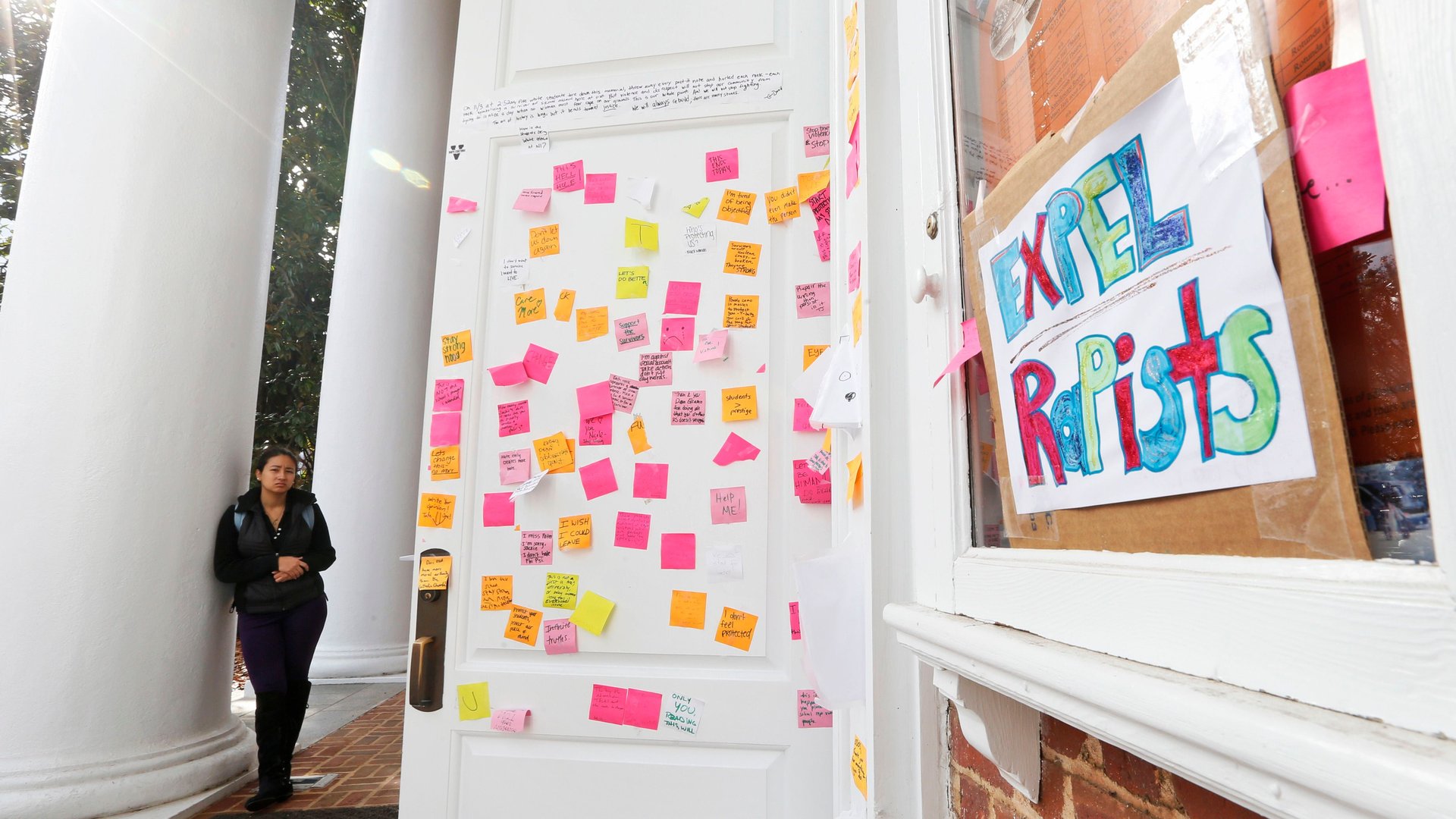The feminist argument for naming rape survivors in the media
On April 5, Columbia Journalism School published a 13,000-word investigation of the now infamous Rolling Stone story ”A Rape on Campus,” which detailed the alleged gang rape of a female student in a University of Virginia fraternity house, identified as “Jackie.” The magazine’s dramatic narrative was almost immediately challenged by journalists and fact checkers who found major discrepancies and reporting flaws, forcing Rolling Stone to eventually retract the story, and prompting the fraternity in question to threaten legal action.


On April 5, Columbia Journalism School published a 13,000-word investigation of the now infamous Rolling Stone story ”A Rape on Campus,” which detailed the alleged gang rape of a female student in a University of Virginia fraternity house, identified as “Jackie.” The magazine’s dramatic narrative was almost immediately challenged by journalists and fact checkers who found major discrepancies and reporting flaws, forcing Rolling Stone to eventually retract the story, and prompting the fraternity in question to threaten legal action.
The Rolling Stone retraction and the writer’s apology accurately note the potential chilling effect this incident may have on rape survivors sharing their stories. As a feminist and a journalist who has reported on crime and sexual assault, I know the effect could extend to reporters as well, who already face challenges reporting on rape.
But the Rolling Stone debacle has the potential to be a watershed moment in the way journalists deal with sexual assault, turning a huge misstep into progress.
Any conversation about sexual assault in newsrooms must first deal with what is potentially the thorniest of issues: whether or not to name the victim. Neither Rolling Stone nor the Columbia report use Jackie’s full name. Many newsrooms have a specific policy to not name sexual assault victims in a story (Quartz does not have a policy on naming victims.)
This is often in contrast with their policies regarding the victims of other crimes, who may be granted anonymity if they ask for it or if they could face danger, but not as a requirement in the newsrooms’ ethics codes. To be fair, newsrooms began this policy decades ago—in line with rape shield laws and at the request of sexual assault victims advocates—citing the stigmas rape victims face from society. But that was the 1970s, and the debate over whether to name victims has been going on for decades now.
Since then, journalists have made strong arguments as to why newsrooms should change their policies, noting that there is something patriarchal and counterproductive to the idea that sexual assault is presumed to be shameful for the survivor. Arguably, automatically withholding a crime victim’s name helps to perpetuate that stigma. Conversely, seeking out survivors who are open about their stories and names helps remove the stigma, and can encourage other women to be open as well.
Rolling Stone told the Columbia report authors that concern for the alleged victim, Jackie, factored heavily into their decisions not to report and thoroughly verify her story. Even if newsrooms do choose to continue withholding names, they should treat the reporting of a rape the way they would any other crime—with respect and empathy toward the alleged victim, but conveying clearly that in order to tell her story, the journalist will have to reach out to other people involved. According to the Columbia report:
Kristen Lombardi, who spent a year and a half reporting the Center for Public Integrity’s series on campus sexual assault, said she made it explicit to the women she interviewed that the reporting process required her to obtain documents, collect evidence and talk to as many people involved in the case as possible, including the accused. She prefaced her interviews by assuring the women that she believed in them but that it was in their best interest to make sure there were no questions about the veracity of their accounts. She also allowed victims some control, including determining the time, place and pace of their interviews.
If a woman was not ready for such a process, Lombardi said, she was prepared to walk away.
That last sentence is important—with more and more survivors willing to tell stories, it’s no longer necessary to rely solely on a single source.
Then there are the types of stories that attract journalists’ attention. The authors of the Columbia report point out that Sabrina Erdely, the Rolling Stone story writer, could have used another survivor as her story’s focal point. But instead she went with what she clearly believed to be the most shocking one, not the most representative.
This highlights a related problem with the way we talk about rape in general. Often the representative stories of sexual assault, especially on campuses, are much less black and white than we might want them to be. The victim and alleged attacker are likely to know each other; there is often alcohol involved, and there might not be a lot of witnesses. The desire to find the most outrageous examples puts journalists in the same boat as police and prosecutors who are less likely to pursue charges when the waters are in the least bit muddied. The truth about rape is it’s not always a violent struggle, perpetuated by a scary stranger in an alley. And it’s not limited to college campuses, either.
Maybe, as the Columbia report suggests, we can start telling the more representative stories with full reporting, video, 911 calls, cooperation from survivors who provide hospital and school records, emails and texts. Or if all the proof isn’t there for each individual case, and it often won’t be, maybe we look at the data, or the faulty processes on college campuses that prevents so many alleged attackers from being punished.
Yes, the Rolling Stone story should be a message to journalists everywhere. But the takeaway should be to report smarter, not to stop reporting.